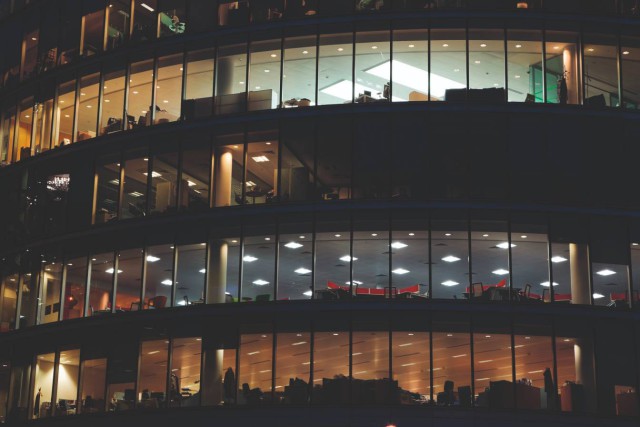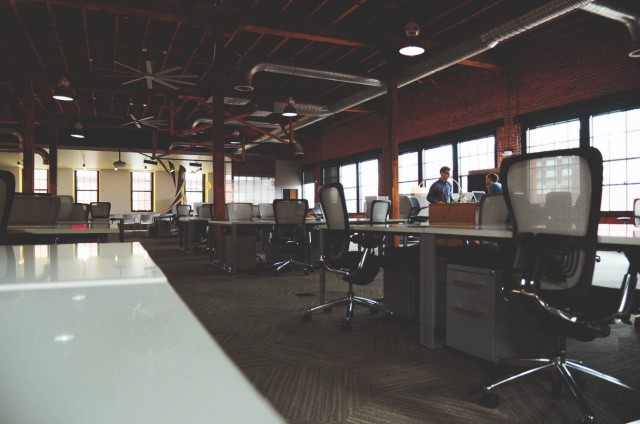Smart buildings for a new era

With one of the hottest summers on record behind us and the country in the middle of a cost of living crisis, Graeme Rees, President of the Building Controls Industry Association (BCIA), discusses the increasing value of smart buildings in making our buildings both comfortable to occupy and more energy efficient.
There is never a quiet or easy time to take over as Prime Minister, as any previous inhabitant of No. 10 will tell you. Much of Boris Johnson’s time as the UK’s leader was dominated largely by the fallout from Brexit, the war in Ukraine and of course Covid. Opinions on how successful he was with any of these will depend on who you ask - but that is not a debate for this article. Liz Truss had been in the job for a matter of days when we learned of the very sad news about the passing of Her Majesty Queen Elizabeth II, our longest-reigning monarch. Before that era-defining event, there was much talk of how the Government would aim to tackle the cost of living crisis, with energy bills predicted to soar as we moved into winter and many households and businesses extremely worried about how they are going to cope.
While for many heating their homes over the winter is a major concern now, in the summer, as temperatures hit 40°C in parts of the country the talk was more around keeping our buildings cool and ensuring commercial buildings remained comfortable places to work. In the extreme heat, there were many cases in which businesses asked some employees to work from home where possible to make conditions more bearable in their workspaces. Flexible working has of course become a lot more widespread since the Covid outbreak as lockdown proved that employers and employees could carry on functioning effectively while working from home. The adoption of online meeting platforms such as Zoom and Teams meant important discussions could still take place without the need to meet up in person and online meetings have become more common as we are perhaps waking up to the fact that driving to a meeting is neither environmentally friendly nor financially justifiable in many cases.
However, those among us who have become accustomed to working from home on a regular basis may suddenly find a return to the office more appealing thanks to the aforementioned rising energy bills! This brings us back to the issue of making our workplaces comfortable for their occupants. This can create internal problems for workplace bosses who have an almost impossible task of keeping all of their staff happy and comfortable.
In some circumstances, individuals might make small alterations to their own personal workspace to improve their comfort. This might be as simple as having their own plug-in heater under their desk to keep warm if the building’s heating system is not providing enough warmth, or taping over air vents if the air conditioning is too cold. These will of course create control havoc and energy waste, not to mention potential safety concerns. Details like these should be checked regularly – for example as soon as the weather turns cooler the vents that are now producing warm air will not be as effective if they are partially covered.
Weathering the storm
It is probably fair to say that we in the UK are guilty of obsessing about the weather, and it is during the seasons which most often produce our most ‘extreme’ weather that the same discussions surface about whether we should travel to work, how our transport systems will fare in the hot/cold temperatures and advice on how to stay safe. However, as the sun begins to set (excuse the pun) on the UK’s hottest summer ever recorded, perhaps we do need to place a greater focus on the suitability of our commercial buildings in extreme temperatures.
Whether a space is sparsely or densely occupied, we have buildings throughout the country, old and new, that could be managed better, and the long-term benefits of investing in smart technology is becoming clearer every day.
Boris Johnson was criticised for stating that replacing an old kettle that takes ages to boil with a new one could save you £10 a year on your electricity bills. While the statement and delivery was glib at best, I suppose I should give him some credit for pointing out that investing in new technology can indeed save money in the long run. And it is true, the technology is there, so let’s take advantage. But I’m afraid it will take more than a kettle upgrade to make our buildings more energy efficient.
Wake-up call
The lockdown periods in the last couple of years have cast a spotlight on the issue of building performance and efficiency. With many commercial buildings suddenly left unoccupied we were provided with a real insight into how unprepared many businesses were in terms of managing their premises efficiently.

In the age of corporate ESG (environmental, social governance) many organisations experienced a wake-up call and realised just how far behind they were in their environmental credentials and commitments to sustainability. ESG criteria are a set of standards for a company’s behaviour used by socially conscious investors to screen potential investments. Environmental criteria consider how a company safeguards the environment, including corporate policies addressing climate change, for example. Social criteria examine how it manages relationships with employees, suppliers, customers, and the communities where it operates, and governance standards ensure a company uses accurate and transparent accounting methods, pursues integrity and diversity in selecting its leadership, and is accountable to shareholders.
From an environmental perspective, in a true smart building, if the technology is correctly designed, installed, commissioned and maintained it can help reduce energy consumption and spending and in doing so reduces carbon emissions. Companies can also provide the measurement and report the data to be able to illustrate their case to corporate shareholders.
From the social angle, in the 21st century it is perfectly reasonable that we expect better conditions in the buildings we occupy. We have the technology available to us, and while your average modern family saloon car is given all the mod-cons to increase our comfort when driving, we arguably spend more time at work, so should we not be comfortable there, too?
Wellness of individuals
As technology continues to evolve, there is an increasing focus on the wellness of individuals in the workplace, as well as the drive for smarter buildings that help boost productivity.
As mentioned earlier, flexible working is becoming more common and it is therefore important that businesses make their places of work comfortable to work in for their staff when they are not working remotely. Workspaces that are clean, comfortable and safe are obvious requirements for any business that wants to attract the best staff. Employees who feel happy in their workplace are generally more motivated and more productive than those who feel that their work environment falls short of expected standards. The latest advancements in technology allow for smart building controls systems and sensors to be installed, which enable users to optimise their working environment. In conjunction with a Building Energy Management System (BEMS), heating, ventilation and air-conditioning can all be set to individuals’ personal preferences. By putting in place the technology that enables occupants to manage their environment easily, building managers will also reap the benefits in energy savings.
Get connected
Not only is the technology going into buildings improving, but the ways in which both a facilities manager and its occupants can connect with their buildings are becoming simpler through the development of smart building software and apps. A smart building app can bring together all the smart features of a building, such as occupancy monitoring, temperature monitoring and energy monitoring and make the information available instantly on a smartphone or tablet. For the occupants, functions such as lighting and temperature adjustment, digital access systems and room-booking functions create a more user-friendly experience.
Sustainability is a pivotal factor when creating and managing smart buildings, with energy conservation and CO2 reduction very much the long-term objectives of building controls. The unprecedented situations we have found ourselves in the past year or two have certainly galvanised the issue, but the ability to manage, adapt and interact with our buildings is important at any time, not just during a pandemic or an excessive heatwave.







